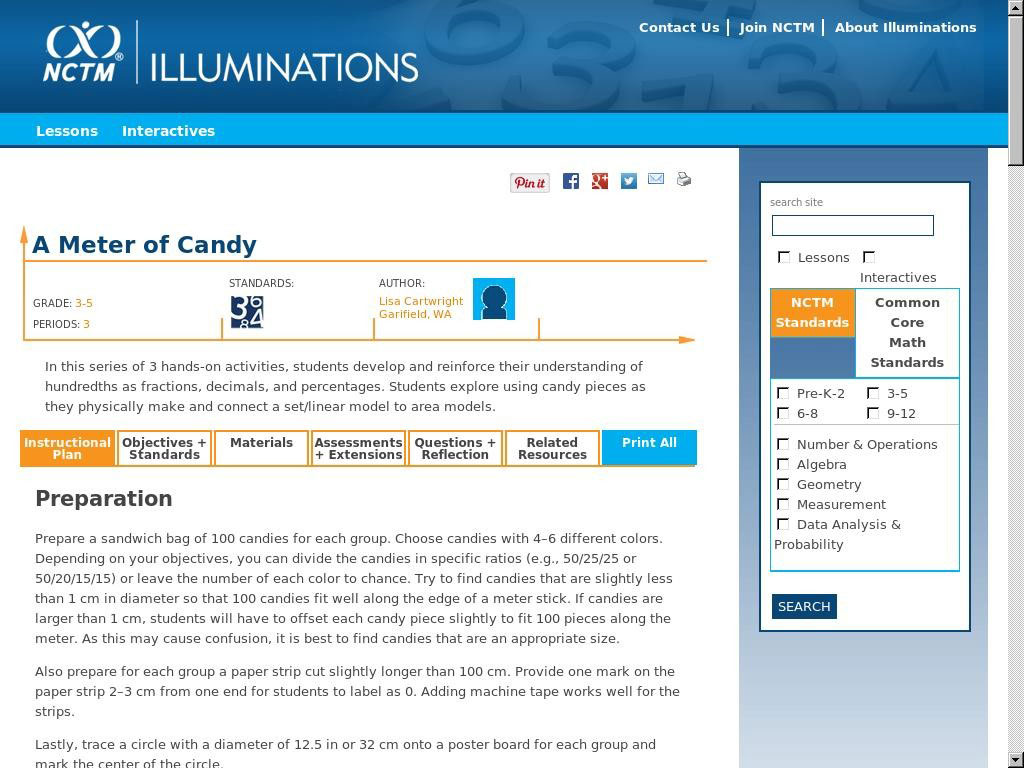A Meter of Candy
Developing a sense of hundredths through the use of models In this series of 3 hands-on activities, students develop and reinforce their understanding of hundredths as fractions, decimals, and percentages Students explore using c... (read more)
Developing a sense of hundredths through the use of models In this series of 3 hands-on activities, students develop and reinforce their understanding of hundredths as fractions, decimals, and percentages. Students explore using candy pieces as they physically make and connect a set/linear model to area models. (read less)
Standards
- Common Core State Standards for Mathematics
- Use appropriate tools strategically.
- Model with mathematics.
- Understand a fraction a/b as a multiple of 1/b.
- Read and write decimals to thousandths using base-ten numerals, number names, and expanded form, e.g., 347.392 = 3 × 100 + 4 × 10 + 7 × 1 + 3 × (1/10) + 9 × (1/100) + 2 × (1/1000).
- Interpret a fraction as division of the numerator by the denominator (a/b = a ÷ b). Solve word problems involving division of whole numbers leading to answers in the form of fractions or mixed numbers, e.g., by using visual fraction models or equations to represent the problem.
- Express a fraction with denominator 10 as an equivalent fraction with denominator 100, and use this technique to add two fractions with respective denominators 10 and 100.
- Make sense of problems and persevere in solving them.
- Look for and make use of structure.
- Multiply side lengths to find areas of rectangles with whole-number side lengths in the context of solving real world and mathematical problems, and represent whole-number products as rectangular areas in mathematical reasoning.
- Understand a fraction 1/b as the quantity formed by 1 part when a whole is partitioned into b equal parts; understand a fraction a/b as the quantity formed by a parts of size 1/b.
- Use decimal notation for fractions with denominators 10 or 100.
- Express whole numbers as fractions, and recognize fractions that are equivalent to whole numbers.
- Multiply a whole number of up to four digits by a one-digit whole number, and multiply two two-digit numbers, using strategies based on place value and the properties of operations. Illustrate and explain the calculation by using equations, rectangular arrays, and/or area models.
- Partition shapes into parts with equal areas. Express the area of each part as a unit fraction of the whole.

